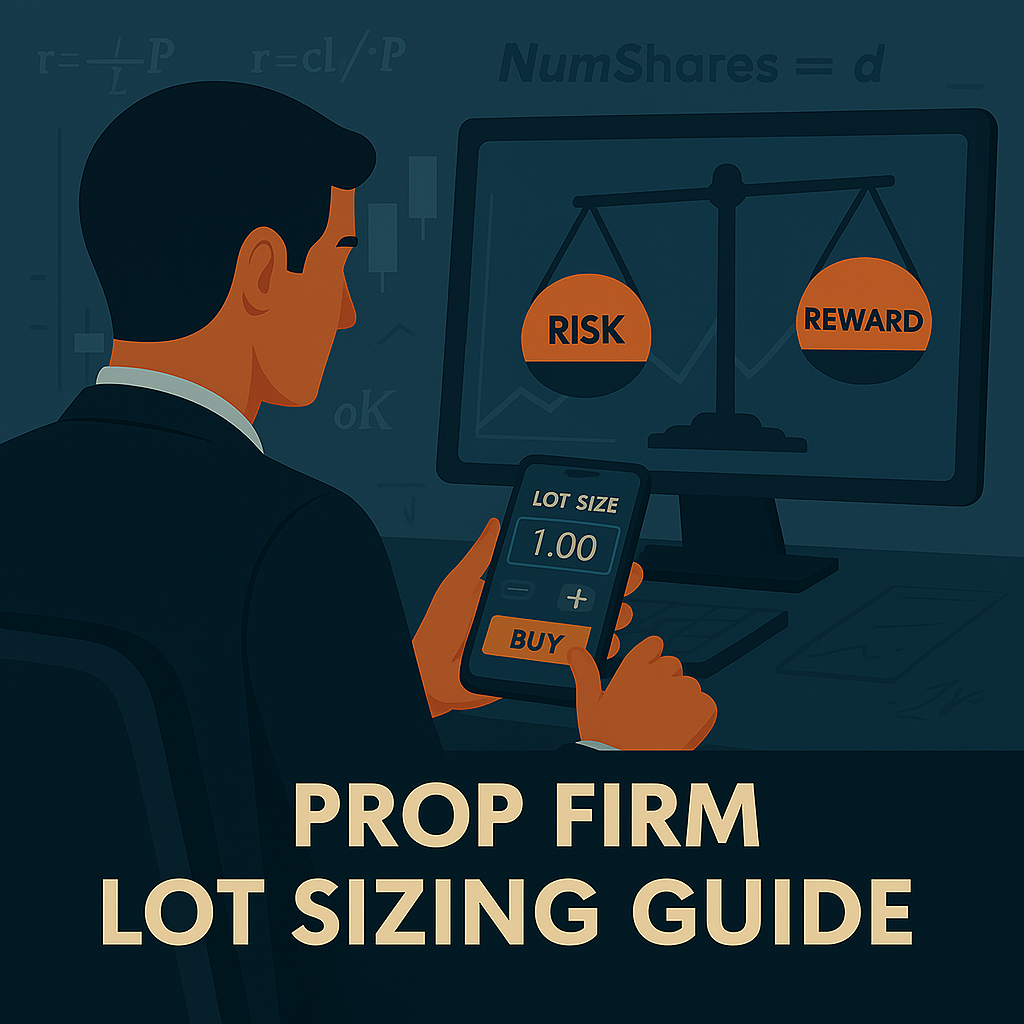Prop Firm Lot Sizing Guide: How to Set Proper Lot Sizes in Funded Accounts
Setting the right lot size can be the difference between consistent profits and rapid drawdowns. Understanding the prop firm lot sizing guide is essential for any trader operating with funded accounts. Especially at firms like Larsa Capital, smart position sizing helps traders remain within risk limits while maximizing potential.
A successful trader knows it’s not just about entering good trades—it’s also about managing risk properly. That’s where lot sizing plays a crucial role.
The Importance of Lot Size in Funded Trading
When trading with a prop firm, your capital is not your own. You’re entrusted with the firm’s funds, and that responsibility requires disciplined risk management. The prop firm lot sizing guide helps traders set sizes that align with account limits and performance goals.
For example, placing an oversized lot can easily violate daily or overall drawdown limits. On the other hand, being too conservative may lead to underperformance and failure to reach profit targets.
Factors That Influence Lot Size in Funded Accounts
Understanding the key variables is a must. Here are the primary components:
- Account Size: A larger funded account allows for slightly higher lot sizes, but the principles of proportion still apply.
- Risk Per Trade: A general rule is to risk 1-2% of the account per trade.
- Stop Loss Distance: The wider the stop, the smaller your lot size should be to maintain proper risk control.
- Leverage: Funded accounts, like those at Larsa Capital, often provide set leverage. Ensure your lot size respects both leverage and exposure limits.
By balancing these elements, traders can avoid violations and maintain consistent performance.
Prop Firm Lot Sizing Guide for Different Scenarios
Let’s look at how to apply proper lot sizing in practice:
Scenario 1: Short-Term Scalping
A scalper may enter multiple trades daily. Risking 0.5% per trade with tighter stops may allow slightly larger lot sizes, but caution is key.
Scenario 2: Swing Trading
These positions typically have wider stops and longer holding periods. Lot sizes should be smaller to accommodate market swings.
Scenario 3: High Volatility News Trading
During economic releases, spreads widen and volatility spikes. It’s recommended to reduce lot sizes or skip trading altogether during these periods.
Why You Need a Prop Firm Lot Sizing Guide
Many traders fail not due to bad strategies, but due to poor execution. The prop firm lot sizing guide ensures your trades are sized appropriately to survive losing streaks and capitalize on winning trades. This structure supports emotional control—an often overlooked factor in trading performance.
Additionally, following a clear sizing strategy builds discipline. Instead of reacting emotionally, traders can rely on predefined risk parameters. With time, this approach leads to consistent results and long-term success.
Larsa Capital’s Supportive Framework
At Larsa Capital, risk rules are clearly defined, making it easier for traders to determine appropriate lot sizes. With detailed performance dashboards and analytics, traders can monitor and adjust their sizing in real-time.
Moreover, the support team at Larsa Capital ensures that traders understand these metrics from the beginning of their challenge, increasing their chances of success.
Final Thoughts
Lot sizing is one of the most powerful tools in your trading arsenal. Proper sizing protects your account, supports your strategy, and aligns your behavior with long-term goals. Whether you’re just starting with a funded account or aiming to refine your skills, following a structured prop firm lot sizing guide is essential.
With discipline, awareness, and support from platforms like Larsa Capital, traders can thrive in the funded trading space.

